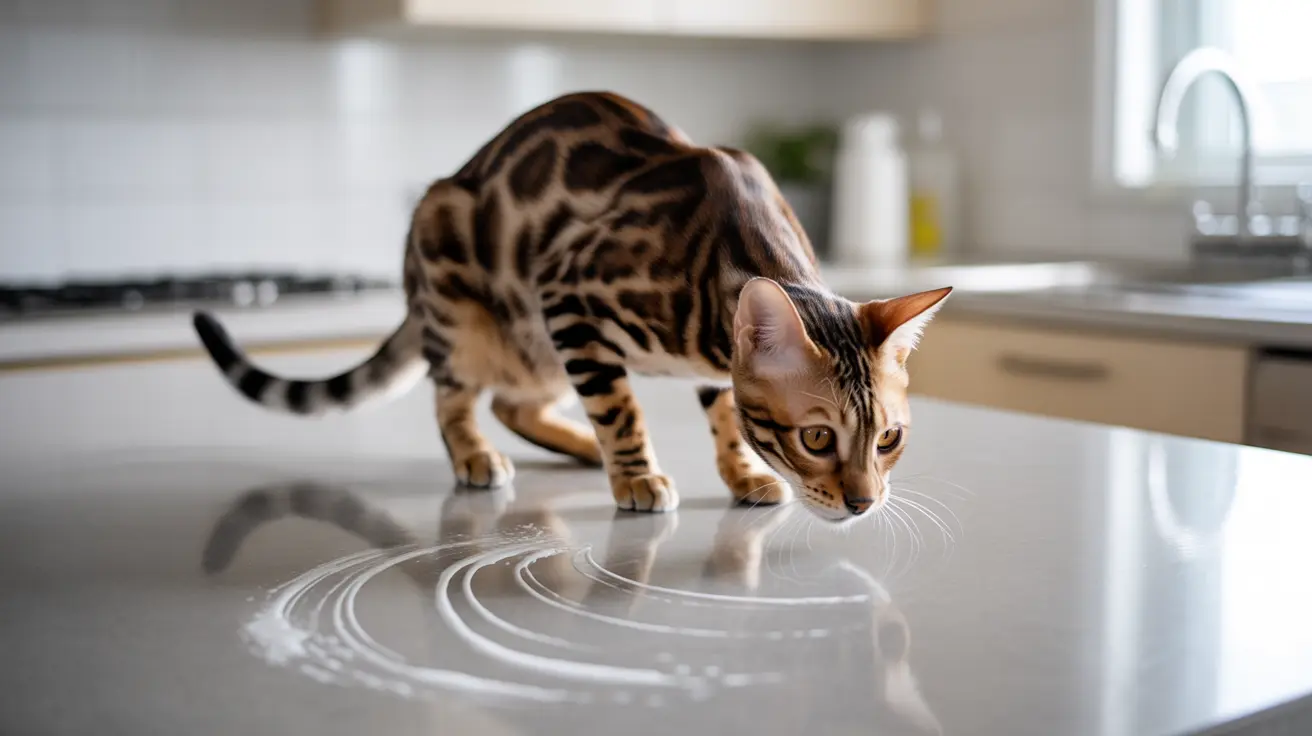The Science Behind Cats' Attraction to Bleach
The primary reason cats are attracted to bleach lies in their sophisticated olfactory system. The chlorine compounds in bleach can trigger responses in cats' vomeronasal organs (also called Jacobson's organs), which they use to process chemical signals in their environment.
These chemical compounds may actually mimic certain feline pheromones, making bleach-scented surfaces irresistibly interesting to cats. This explains why you might see your cat rubbing against or rolling on freshly bleached areas.
Understanding the Risks of Bleach Exposure
Despite cats' natural attraction to bleach, exposure can be extremely dangerous. The chemicals in bleach can cause:
- Respiratory irritation and difficulty breathing
- Chemical burns to mouth, throat, and skin
- Severe stomach upset and vomiting
- Eye damage if direct contact occurs
- Potentially fatal complications if ingested
How Cats Process Different Scents
Cats have approximately 200 million scent receptors, compared to humans' mere 5 million. This heightened sense of smell makes them particularly sensitive to chemical compounds, including those found in bleach. Their response to bleach often mirrors their reaction to catnip, though the underlying mechanisms differ.
Safety Measures for Cat Owners
To protect your cat while maintaining a clean home, consider these essential precautions:
- Store bleach products in securely closed cabinets
- Thoroughly rinse and dry cleaned surfaces before allowing cat access
- Use pet-safe alternatives when possible
- Ensure proper ventilation during and after cleaning
- Never leave diluted bleach solutions unattended
Signs of Bleach Exposure to Watch For
If your cat has been exposed to bleach, watch for these warning signs:
- Excessive drooling
- Pawing at the mouth or face
- Coughing or wheezing
- Vomiting or retching
- Lethargy or confusion
- Red or irritated skin
Frequently Asked Questions
Why are cats attracted to the smell of bleach despite its toxicity?
Cats are attracted to bleach because its chemical compounds can mimic feline pheromones, triggering their natural response to investigate these familiar-seeming scents through their vomeronasal organ.
How can bleach exposure harm my cat and what are the signs of bleach poisoning?
Bleach exposure can cause chemical burns, respiratory problems, and severe digestive issues. Signs include drooling, vomiting, difficulty breathing, and irritated skin or eyes. Immediate veterinary care is essential if exposure occurs.
Is it safe to use bleach for cleaning areas where my cat spends time?
While bleach can be used, surfaces must be thoroughly rinsed and completely dry before allowing cat access. Consider using pet-safe alternatives for areas your cat frequently visits.
Which common scents do cats like and dislike besides bleach?
Cats typically enjoy catnip, valerian root, and silvervine. They generally dislike citrus, cucumber, and strong perfumes. Each cat may have individual preferences.
What precautions should I take if my cat sniffs or licks bleach residues?
If your cat contacts bleach, rinse the affected area immediately with clean water. For ingestion, do not induce vomiting; instead, contact your veterinarian immediately for guidance.
Remember, while cats' attraction to bleach is natural, it's crucial to prioritize their safety through proper cleaning practices and careful storage of household chemicals. If you notice any concerning symptoms after potential bleach exposure, don't hesitate to seek veterinary care.






